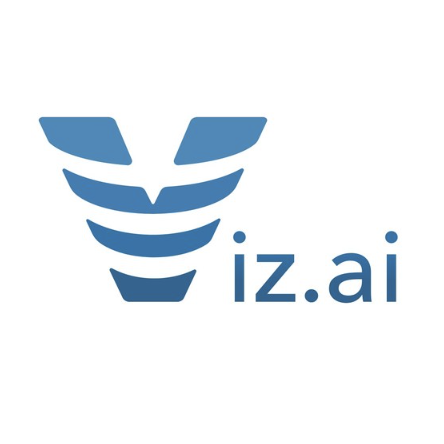Digital commerce, direct to consumer, and other b2c-focused startups need a strong financial foundation to be successful.
The chart of accounts (COA) is central to this foundation, and it’s a crucial tool that organizes a company’s financial transactions and provides invaluable insights into its fiscal condition. Your chart of accounts can help you efficiently manage your eCommerce startup’s finances, make informed strategic decisions, and maintain growth in the ever-evolving landscape of online retail.
Distinctive chart of accounts needs of ecommerce startups
Ecommerce startups operate in a dynamic and competitive environment, leveraging digital platforms to offer a wide array of products and services to customers worldwide. Unlike traditional brick-and-mortar businesses, ecommerce ventures have unique financial requirements shaped by their online presence, digital transactions, and supply chain complexities.
Unique accounts for ecommerce ventures
Given the nature of ecommerce operations, the chart of accounts for such startups will include distinctive categories that these companies need for effective financial management. Kruze Consulting uses a structured six-digit account numbering system, which allows for the creation of detailed accounts within each category to capture essential financial information. We have more detail on charts of accounts here.
We use the following categories and number groupings:
| Current Assets | 100000 - 199999 |
| Liabilities | 200000 - 299999 |
| Equity | 300000 - 399999 |
| Sales | 400000 - 499999 |
| Cost of Good Sold | 500000 - 599999 |
| Sales, General, and Administrative Expenses | 600000 - 699999 |
| Research & Development Expenses | 700000 - 799999 |
| Other Operating Expenses | 800000 - 899999 |
| Other Income / Expenses | 900000 - 999999 |
Under these accounts, you’ll find sub-accounts that roll up into the main asset category. The first digit of each account number indicates which group the account belongs to.

The table below shows some of the different types of accounts an ecommerce firm may need, along with some of the more standard account types. The account numbers follow Kruze’s standard numbering system, but individual account numbers could vary.
NOTE: This is not a comprehensive list – this is just a sample of the accounts your ecommerce company may require.
eCommerce specific chart of accounts
| Account Number | Account Name | Account Type | Detail Type |
| 104000 | Cash | Current Assets | Checking |
| 120000 | Accounts Receivable | Current Assets | Accounts Receivable |
| 131100 | Prepaid Expenses | Current Assets | Prepaid Expenses |
| 139000 | Inventory | Current Assets | Inventory |
| 150000 | Fixed Assets | Current Assets | Computer Equipment |
| 159000 | Accumulated Depreciation | Current Assets | Accumulated Depreciation |
| 210000 | Accounts Payable | Liabilities | Accounts Payable |
| 221000 | Credit Card Payable | Liabilities | Credit Card Payable |
| 236100 | Sales Tax Payable | LIabilities | Sales Tax Payable |
| 241000 | Notes Payable | Liabilities | Notes Payable |
| 300000 | Equity | Equity | Equity |
| 400000 | Sales | Sales | Sales of Product Income |
| 503000 | Freight & Delivery | Cost of Goods Sold | Shipping - Cost of Services |
| 505000 | Hosting Fees | Cost of Goods Sold | Other Costs of Services |
| 601000 | Marketing and Advertising Expenses | SG&A Expense | Marketing |
| 602000 | Payroll Expenses | SG&A Expense | Payroll |
| 602104 | Payroll Taxes Payable | SG&A Expense | Payroll Taxes Payable |
| 603000 | Software Subscriptions | SG&A Expense | Software Subscription |
| 604000 | Professional Services | SG&A Expense | Professional Fees |
| 614000 | Rent Expenses | SG&A Expense | Rent |
| 810000 | Depreciation Expense | Other Operating Expenses | Depreciation |
| 812000 | Utilities Expenses | Other Operating Expenses | Utilities |
Here’s a breakdown of potential unique accounts specific to ecommerce startups:
- Transaction Processing Fees. This account tracks fees incurred for processing online transactions, including credit card payments, digital wallet transfers, and other forms of electronic payments.
- Shipping and Fulfillment Costs. Reflecting expenses associated with packaging, shipping, and order fulfillment services, this account provides insights into the operational expenses of delivering products to customers.
- Marketing and Advertising Expenses. Ecommerce startups often allocate significant resources to digital marketing campaigns, including social media ads, search engine optimization, and influencer partnerships. This account monitors expenditures related to promoting products and driving customer acquisition.
- Platform Usage Fees. This represents revenue generated from subscription fees, transaction commissions, or usage charges for accessing the ecommerce platform or marketplace.
- Inventory Valuation Adjustments. This account tracks adjustments to the value of inventory based on factors such as obsolescence, shrinkage, or market fluctuations, ensuring accurate financial reporting.
- Customer Returns and Refunds. This account records refunds issued to customers for returned or defective products, facilitating proper tracking of sales reversals and associated costs.
- Technology Infrastructure Costs. These accounts are for expenses related to website development, hosting, security enhancements, and software subscriptions essential for maintaining a robust ecommerce infrastructure.
- Sales Tax Payable. With ecommerce sales subject to various tax regulations, this account tracks the amount of sales tax collected from customers and owed to tax authorities.
- Vendor Payments and Disbursements. These accounts monitor payments made to suppliers, manufacturers, and vendors for inventory purchases, raw materials, or services rendered.
- Fraud Prevention Expenses. This reflects costs associated with implementing fraud detection systems, chargeback management, and security protocols to mitigate the risk of online fraud and cyber threats.
A meticulous chart of accounts is indispensable for ecommerce startups that deal with the complexities of online commerce. By incorporating unique accounts tailored to the nuances of digital retail, ecommerce founders can gain deeper visibility into their financial operations, make informed decisions, and get sustainable growth in the competitive ecommerce landscape.
For personalized guidance on setting up a chart of accounts for your ecommerce venture, contact us.








